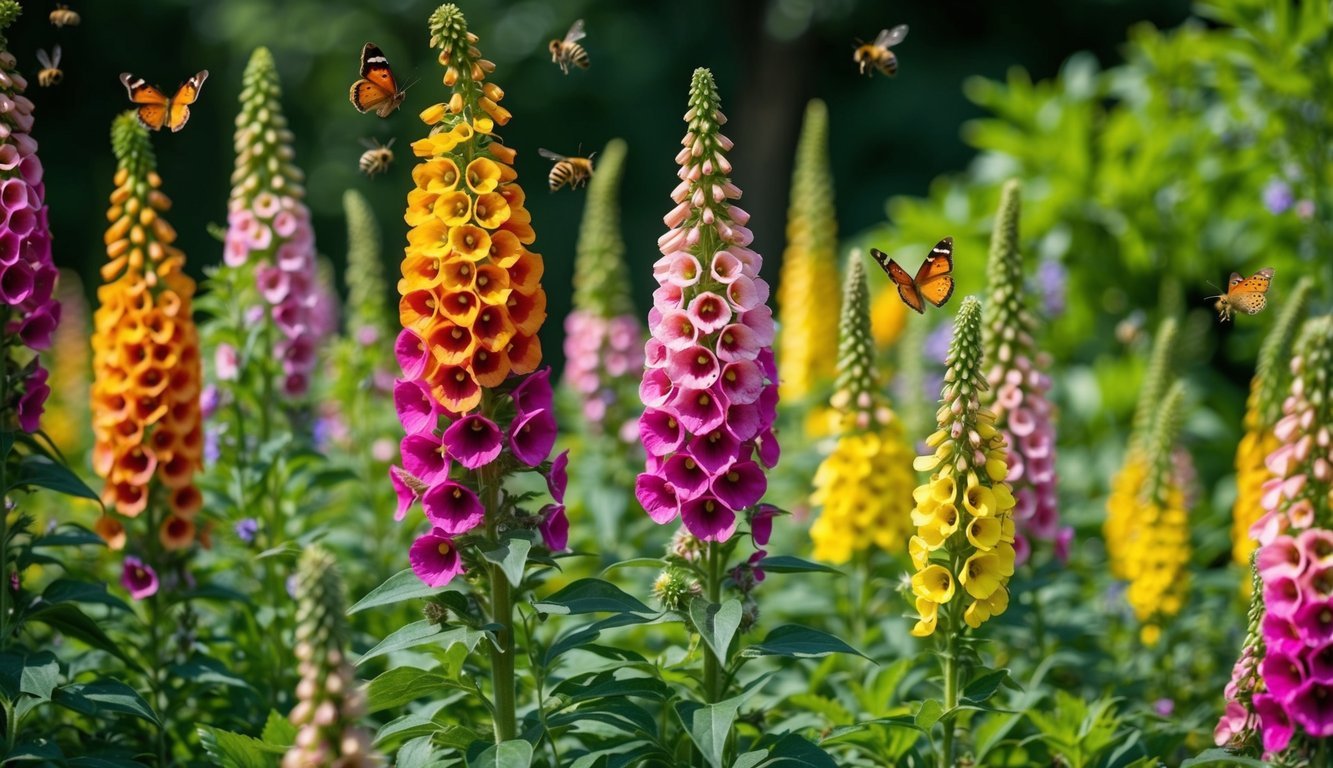
An Overview of Foxgloves
Foxgloves present tall structures adorned with clusters of tubular flowers, commonly in pinkish-purple hues and featuring striking speckled interiors alongside broad, lance-like leaves.
They prefer basking in morning sunlight but need shelter from the harsh heat of the afternoon sun.
As biennials or short-lived perennials, Digitalis purpurea generally blooms in the early summer in cooler climates, while warmer locales may witness their flowering in spring, continuing until the heat peaks.
In regions with hot summers and mild winters, planting in the fall fosters overwintering, resulting in cheerful spring blooms.
The Biennial Growth Cycle
The Digitalis genus encompasses around 20 species, some of which are perennial, like the strawberry foxglove (D. x mertonensis).
In contrast, Digitalis purpurea is classified as a biennial, completing its life cycle in two years while ensuring a continuous presence by reseeding.
Some cultivars even bloom in their first year, allowing for earlier displays.
Strategies for Managing Reseeding
To curb the emergence of unwanted seedlings in future growing cycles, deadheading spent flowers is effective.
This practice not only helps regulate new volunteer seedlings in succeeding seasons but also keeps them from spreading to other sections of the garden.
If desired, leaving a few blooms can support perennial growth or pave the way for new plugs, nursery plants, or selected seed varieties in future cycles.
For extra seeds, you can either let them fall naturally or collect and store them when dried for later planting.
For best germination results, sow these seeds immediately after harvesting.
Additionally, if space allows, foxgloves make for lovely cut flowers as well.
Cutting the main stem during full bloom can encourage side shoots, yielding smaller blooms that prolong the color display.
If you’re eager to introduce foxgloves to your garden, sow seeds in late summer or early fall, giving them time to establish for a spring bloom.
For those planting in spring, wait about one or two weeks after the last frost date to begin.
It’s crucial to remember that foxglove seeds require light for germination.
When planting, scatter them on the soil surface without covering them, pressing them lightly or gently raking to ensure good contact.
Under consistently moist conditions, you can expect germination to occur within two to three weeks.
Once seedlings reach about three to five inches tall, thin them out or transplant them, leaving approximately 18 inches of space between each plant.
Foxgloves are charming additions to gardens and are integral to the cottage garden aesthetic.
They serve as focal points in annual plantings or as backdrop features in a variety of garden arrangements.
- ‘CAMELOT MIX’: This hybrid collection stands out for its ability to bloom in the first year, featuring tall stems adorned with pale lavender flowers marked by deep speckles—no staking required.
- ‘DALMATIAN PEACH’: This variety showcases vibrant peach blooms highlighted by darker speckles, and it’s compact enough to thrive in various garden settings while producing first-year flowers.
- ‘ALBA’: A stunning option, ‘Alba’ boasts pure white flowers on elegant, tall spikes, adding a touch of timeless charm.
By understanding how foxgloves grow, their potential for reseeding, and the conditions they prefer, you can effectively manage these beautiful plants in your garden.
With careful management, foxgloves can continue to grace your landscape with their stunning elegance for many seasons to come.
Source: Epicgardening.com

